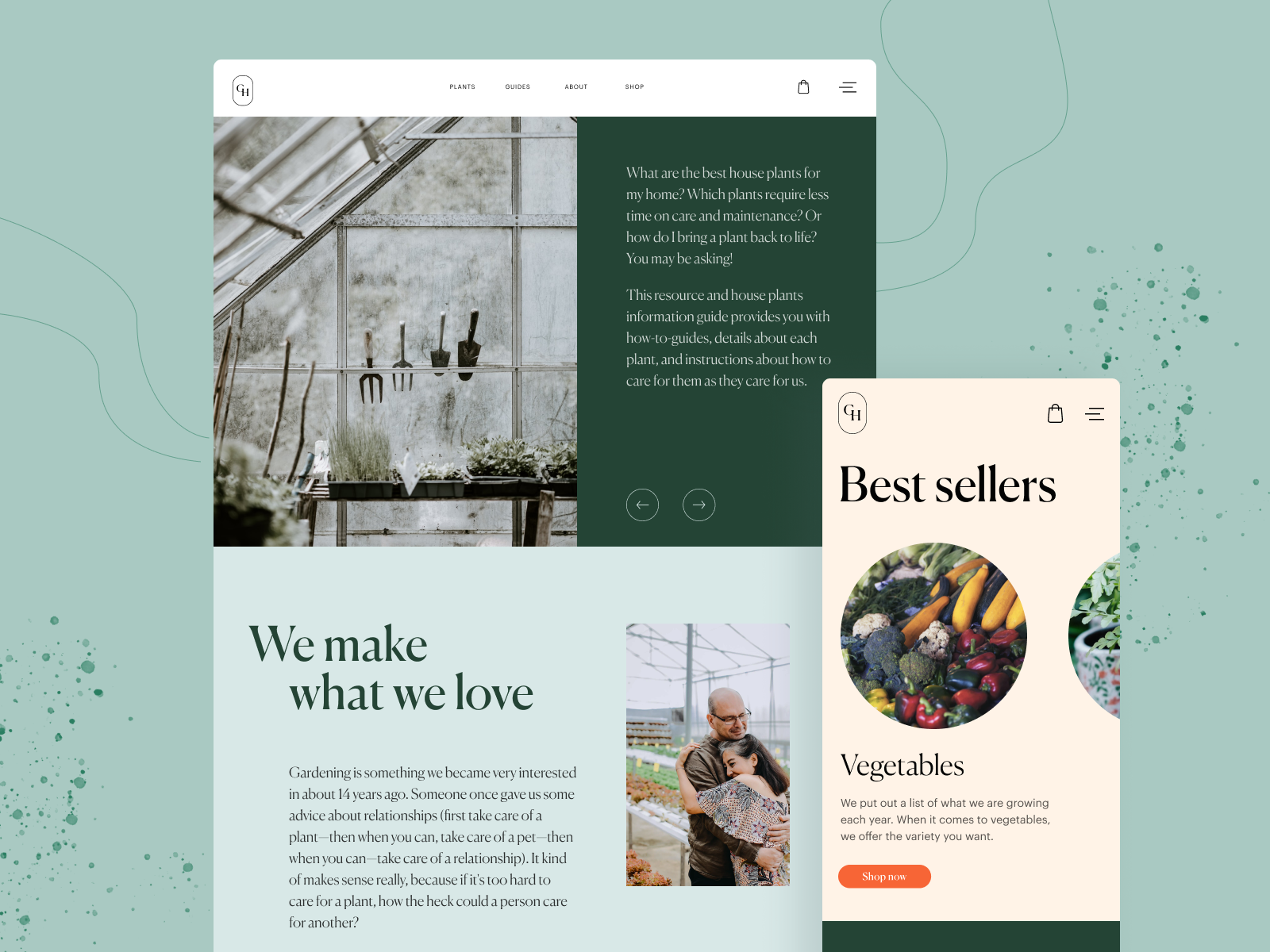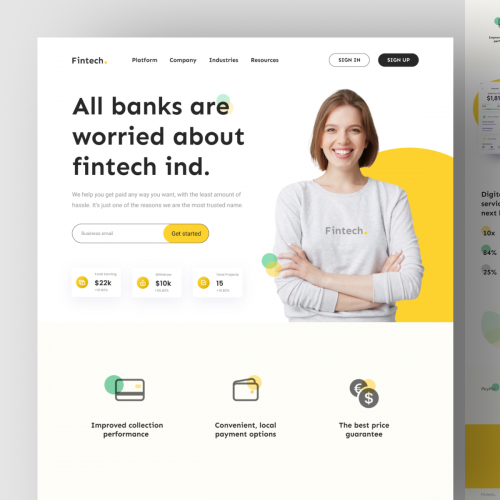Important Concepts of Internet Site Layout: Creating User-Friendly Experiences
In the world of website layout, the creation of user-friendly experiences is not simply a visual search but a basic requirement. Crucial concepts such as user-centered style, intuitive navigating, and accessibility act as the foundation of effective digital systems. By focusing on customer needs and choices, designers can promote interaction and complete satisfaction, yet the effects of these concepts extend past plain capability. Comprehending how they link can considerably influence a website's overall efficiency and success, prompting a better evaluation of their private functions and collective impact on user experience.
Significance of User-Centered Style
Prioritizing user-centered style is vital for creating effective sites that satisfy the requirements of their target market. This strategy places the individual at the leading edge of the layout process, making certain that the site not only works well however additionally reverberates with customers on a personal degree. By comprehending the individuals' choices, behaviors, and objectives, designers can craft experiences that foster interaction and complete satisfaction.

Furthermore, embracing a user-centered style viewpoint can cause enhanced availability and inclusivity, satisfying a varied target market. By taking into consideration different user demographics, such as age, technical efficiency, and social histories, developers can produce websites that are welcoming and useful for all.
Eventually, focusing on user-centered style not only boosts customer experience but can also drive crucial service outcomes, such as increased conversion rates and client loyalty. In today's affordable electronic landscape, understanding and prioritizing user requirements is a crucial success element.
Intuitive Navigation Frameworks
Effective site navigating is frequently a crucial aspect in boosting customer experience. User-friendly navigation structures allow individuals to locate information promptly and efficiently, reducing disappointment and boosting interaction.
To produce instinctive navigation, designers should prioritize quality. Labels need to be detailed and acquainted to individuals, avoiding lingo or unclear terms. A hierarchical structure, with key groups bring about subcategories, can additionally aid individuals in comprehending the connection in between various areas of the site.
Additionally, integrating visual hints such as breadcrumbs can direct customers through their navigating path, permitting them to quickly backtrack if needed. The addition of a search bar also boosts navigability, giving individuals guide accessibility to web content without needing to browse through numerous layers.
Responsive and Flexible Formats
In today's electronic landscape, guaranteeing that websites operate effortlessly throughout various devices is crucial for user satisfaction - Website Design. Adaptive and receptive formats are 2 essential methods that enable this capability, providing to the diverse variety of display dimensions and resolutions that users might encounter
Receptive layouts use fluid grids and flexible pictures, enabling the internet site to instantly adjust its components based upon the display measurements. This technique gives a consistent experience, where material reflows dynamically to fit the viewport, which is particularly helpful for mobile customers. By using CSS media inquiries, developers can create breakpoints that optimize the format for various gadgets without the demand for separate designs.
Flexible formats, on the various other hand, utilize predefined formats for details display dimensions. When an individual accesses the website, the web server spots the device and serves the appropriate design, guaranteeing an optimized experience for varying resolutions. This can lead to faster filling times and enhanced efficiency, as discover this info here each format is tailored to the tool's capacities.
Both flexible and receptive styles are vital for boosting user interaction and fulfillment, ultimately adding to the web site's general efficiency in meeting its goals.
Constant Visual Pecking Order
Establishing a consistent aesthetic hierarchy is critical for directing customers with a site's content. This concept makes sure that information is offered in a way that is both user-friendly and engaging, permitting individuals to quickly browse and understand the product. A distinct pecking order employs numerous style aspects, such as dimension, spacing, color, and comparison, to produce a clear difference between different kinds of web content.

Additionally, regular application of these aesthetic cues throughout the web site fosters experience and trust. Customers can rapidly find out to recognize patterns, making their communications extra effective. Ultimately, a strong aesthetic pecking order not only improves customer experience but likewise improves general website usability, motivating much deeper engagement and facilitating the desired activities on a website.
Ease Of Access for All Users
Availability for all users is an essential element of website layout that guarantees everybody, despite their impairments or abilities, can involve with and take advantage of online content. Designing with access in mind entails applying practices that fit diverse individual needs, such as those with visual, acoustic, electric motor, or cognitive disabilities.
One essential guideline is to adhere to the Internet Web Content Access Guidelines (WCAG), which provide a structure for producing obtainable electronic experiences. This includes using enough shade comparison, supplying text alternatives for webpage pictures, and making sure that navigation is keyboard-friendly. Furthermore, employing responsive design techniques ensures that sites function efficiently across various devices and screen dimensions, better improving availability.
An additional essential variable is using clear, succinct language that prevents jargon, making material understandable for all users. Engaging customers with assistive modern technologies, such as display readers, calls for mindful focus to HTML semantics and ARIA (Available Rich Net Applications) functions.
Eventually, prioritizing access not only satisfies lawful obligations but also increases the target market reach, promoting inclusivity and improving user complete satisfaction. A dedication to availability reflects a dedication to developing equitable digital settings for all users.
Conclusion
Finally, the necessary concepts of website style-- user-centered layout, instinctive navigating, responsive designs, consistent aesthetic pecking order, and access-- collectively contribute to the production of user-friendly experiences. Website Design. By focusing on user requirements and guaranteeing that all individuals can efficiently involve with the site, designers enhance usability and foster inclusivity. These concepts not just improve user complete satisfaction however additionally drive positive official website organization outcomes, eventually demonstrating the crucial importance of thoughtful site layout in today's electronic landscape
These methods offer vital understandings right into customer assumptions and discomfort factors, allowing designers to tailor the site's functions and content appropriately.Reliable site navigating is frequently an important aspect in enhancing user experience.Developing a regular aesthetic pecking order is critical for directing users via an internet site's web content. Ultimately, a strong visual power structure not just improves customer experience yet likewise enhances overall website functionality, encouraging deeper involvement and promoting the preferred activities on a website.
These concepts not only boost individual fulfillment yet additionally drive positive business end results, eventually showing the critical relevance of thoughtful web site design in today's electronic landscape.
Comments on “Website Design for Service Companies: What Works Best”